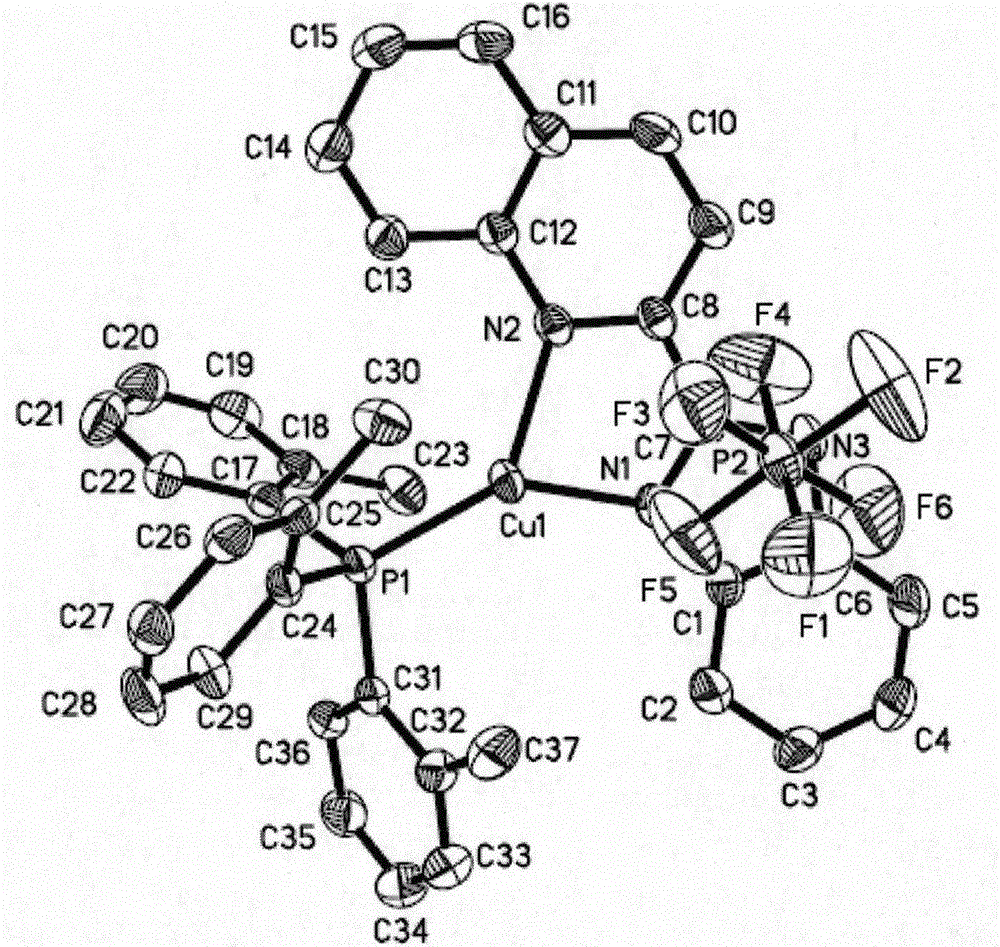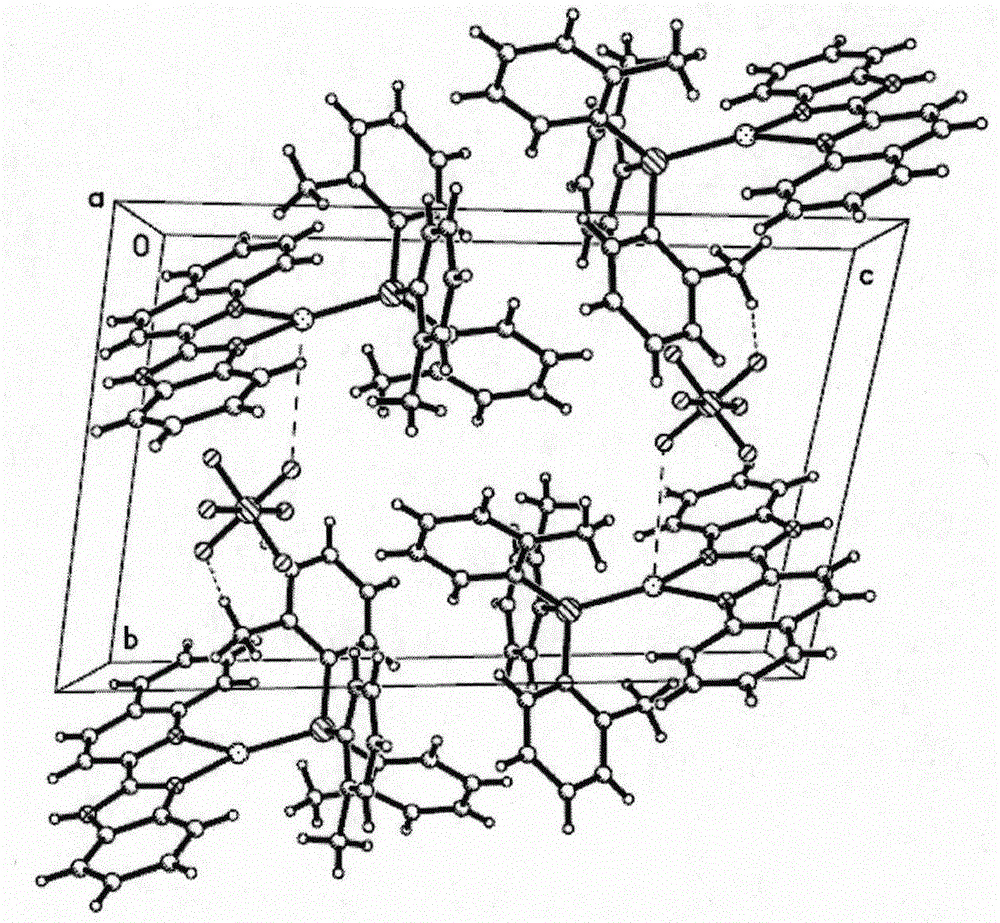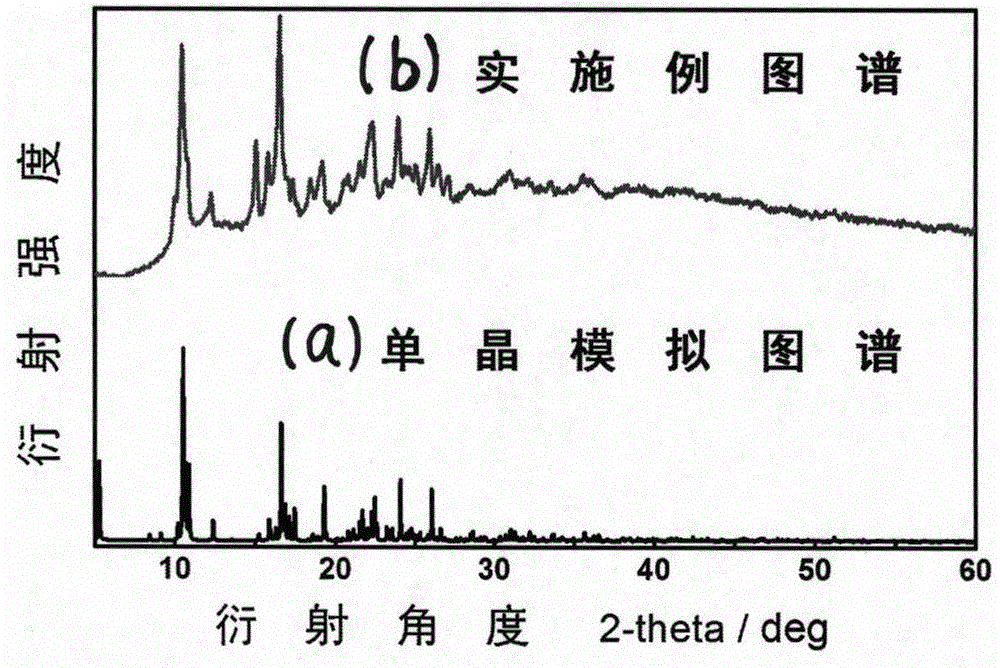A yellow phosphorescent three-coordinate cationic cuprous complex luminescent material
A luminescent material and cationic technology, which is applied in luminescent materials, copper organic compounds, compounds of group 5/15 elements of the periodic table, etc., can solve the problem of expensive, affecting the promotion and application of OLEDs and market performance, and the luminous intensity cannot reach the application Requirements and other issues, to achieve low production costs, good phosphorescence emission performance, and promote inter-system crossing effects
- Summary
- Abstract
- Description
- Claims
- Application Information
AI Technical Summary
Problems solved by technology
Method used
Image
Examples
Embodiment 1
[0033] Preparation of a large number of microcrystalline samples: weigh 112mg Cu(CH 3 EN) 4 PF 6 and 74mg of 2-QBI ligand were dissolved in 10mL of dichloromethane, and 92mg of o-Tol was weighed 3 The P ligand was dissolved in 10 mL of dichloromethane (the molar ratio of the three reactants was 1:1:1), these two solutions were mixed, and stirred to make it fully take place in the coordination reaction, and finally the resulting yellow solution Filtrate, remove all solvents by rotary evaporation, and dry in vacuum to obtain a yellow crystal powder as the product with a yield of 97% (calculated as Cu).
Embodiment 2
[0035] Synthesis of Cu(I) Complex Cu(2-QBI)(o-Tol 3 P)(PF 6 ) single crystal: weigh 37mg Cu(CH 3 EN) 4 PF 6 and 31mg o-Tol 3 After the P ligand was dissolved in 10 mL of dichloromethane, 25 mg of 2-QBI ligand was added to the above solution at one time, stirred to dissolve it completely and then filtered, and the filtrate was covered with n-hexane to promote the crystallization of the product, which precipitated after standing for several days A large number of yellow blocky crystals. A yellow crystal with a size of 0.45mm×0.33mm×0.20mm was selected for X-ray single crystal structure test. The molecular structure of the compound is shown in the attached figure 1 , and its unit cell packing structure is shown in the attached figure 2 .
[0036] For the complex Cu(2-QBI)(o-Tol 3 P)(PF 6 ) of pure-phase crystal samples were subjected to a series of performance tests. The material crystal of the present invention has been tested for steady state fluorescence, and the r...
PUM
 Login to View More
Login to View More Abstract
Description
Claims
Application Information
 Login to View More
Login to View More - R&D
- Intellectual Property
- Life Sciences
- Materials
- Tech Scout
- Unparalleled Data Quality
- Higher Quality Content
- 60% Fewer Hallucinations
Browse by: Latest US Patents, China's latest patents, Technical Efficacy Thesaurus, Application Domain, Technology Topic, Popular Technical Reports.
© 2025 PatSnap. All rights reserved.Legal|Privacy policy|Modern Slavery Act Transparency Statement|Sitemap|About US| Contact US: help@patsnap.com



